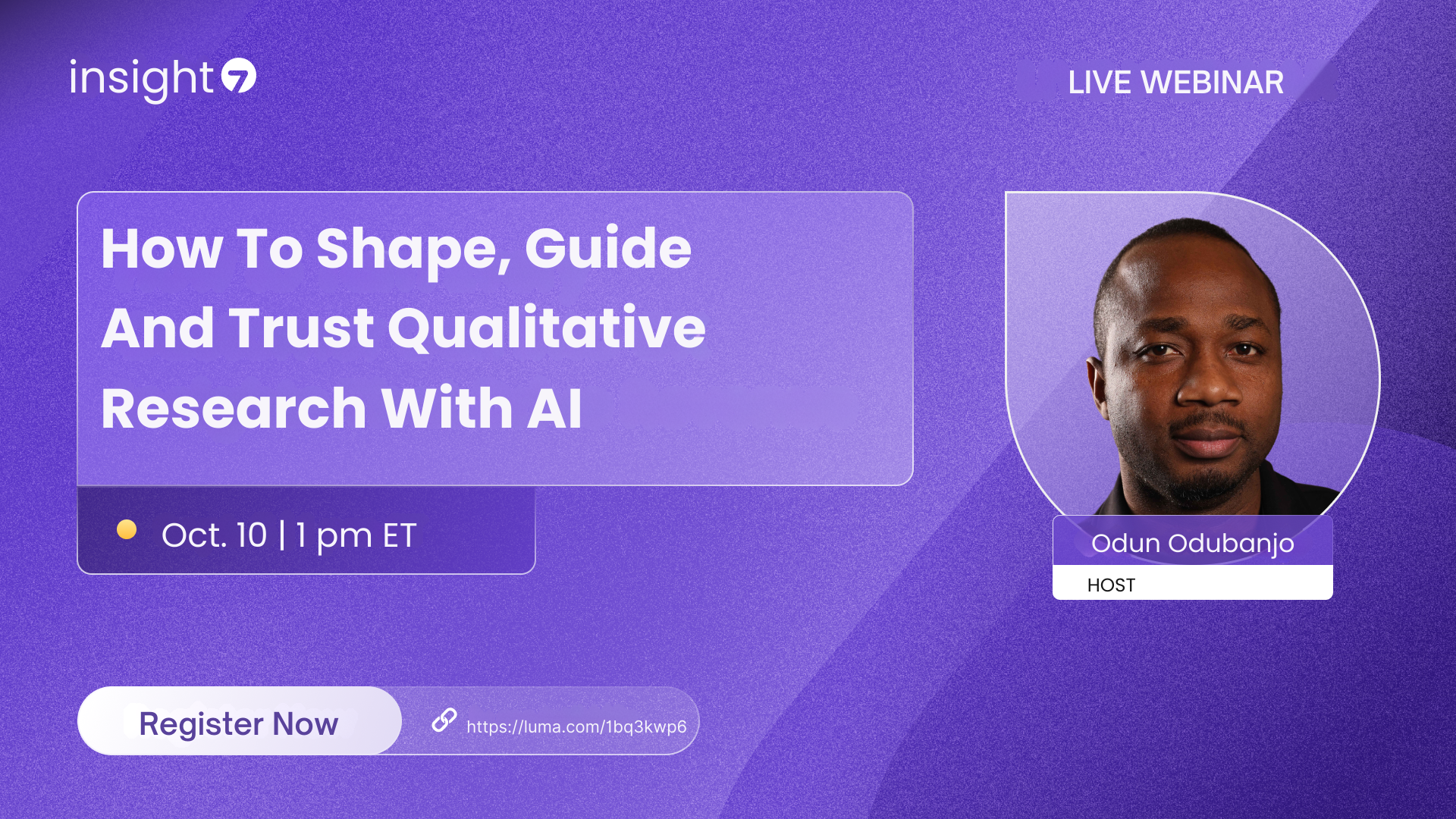How to extract keywords from client calls
-
Bella Williams
- 10 min read
Imagine sifting through countless client calls, searching for those golden nuggets of insight that drive improvement and shape strategy. Call Keyword Extraction emerges as a crucial tool in this journey, enabling businesses to distill important themes from lengthy conversations. By systematically extracting keywords, organizations can gain a clearer understanding of customer needs and preferences.
This process not only saves time by summarizing valuable information but also enhances communication among teams. As you embark on this exploration of effective strategies, you will discover methods to extract keywords that can transform client interactions into actionable insights. Understanding how to harness the power of Call Keyword Extraction will ultimately empower your decision-making and enhance client relationships.
Analyze & Evaluate Calls. At Scale.

The Importance of Call Keyword Extraction in Client Communication
Call Keyword Extraction plays a crucial role in enhancing client communication. By systematically identifying essential terms and phrases from client calls, businesses can gain insights into customer needs and concerns. This process streamlines communication and ensures that relevant information is highlighted, making it easier for teams to address issues effectively and efficiently. The ability to quickly access specific parts of a conversation based on key terms allows staff to respond more appropriately to client needs, contributing to stronger relationships and improved client satisfaction.
Furthermore, effective Call Keyword Extraction drives informed business decisions and strategies. When insights gathered from client interactions are synthesized using extracted keywords, teams can identify trends and priorities that influence future services or product offerings. It empowers organizations to refine their messaging and create tailored solutions that meet specific customer demands. Ultimately, mastering Call Keyword Extraction is integral to fostering transparency and trust in client interactions, ensuring that ongoing communication aligns with client expectations and values.
Enhancing Understanding and Communication
Understanding and communication are paramount in ensuring successful client interactions. The process of extracting keywords from client calls plays a critical role in transforming conversations into actionable insights. When effective communication occurs, both clients and service providers benefit. It’s essential to engage clients by asking pertinent questions and actively listening to their responses. This approach not only provides clarity but also fosters trust and rapport, creating a more positive experience.
Moreover, keyword extraction enables teams to identify recurring themes and concerns directly from customer conversations. By systematically analyzing these insights, businesses can refine their strategies and enhance their service offerings. As teams become adept in utilizing data from calls, they can engage more effectively, turning mere conversations into strategic opportunities. This iterative process of understanding allows for ongoing improvement and a deeper connection with clients.
Driving Business Decisions and Strategies
Effective decision-making in business relies heavily on extracting significant insights from client interactions. Call keyword extraction plays a pivotal role in this process by identifying core themes and essential phrases that emerge during conversations. By carefully analyzing these keywords, businesses can uncover valuable information about client needs, preferences, and pain points, which can be essential for strategic planning.
Incorporating insights from call keyword extraction into business strategies leads to informed decisions that propel growth. This process enables companies to align their services with market demand, tailor their products, and enhance customer experiences. As businesses refine their communication approach based on these insights, they create more impactful interactions and foster stronger relationships with clients. Thus, mastering call keyword extraction is essential for driving effective business decisions and ensuring long-term success.
Extract insights from interviews, calls, surveys and reviews for insights in minutes
Methods for Effective Call Keyword Extraction
Effective call keyword extraction begins with a seamless blend of technology and human insight. Firstly, manual keyword extraction involves transcribing the call, creating a clear written record that captures everything discussed. Following this, identifying key themes and phrases becomes essential. This step requires attentive listening and comprehension to highlight the most impactful keywords like “guarantee” and “advice.” Finally, prioritizing relevant terms ensures that the extracted keywords are both meaningful and actionable.
Alternatively, investing in automated tools streamlines the call keyword extraction process significantly. Platforms such as Insight7 and Otter.ai offer transcription services that provide quick access to essential phrases from multiple calls. Utilizing these tools allows for efficient scanning of conversations, enabling users to focus on the insights rather than getting bogged down in minute details. Overall, combining these methods can greatly enhance the effectiveness of keyword extraction from client calls, guiding important business decisions.
Manual Keyword Extraction: Steps and Techniques
Manual keyword extraction plays a crucial role in understanding client calls effectively. The first step in this process is to transcribe the call. Transcription converts spoken content into written text, allowing for easier analysis and identification of essential elements. After obtaining the transcription, the next step involves identifying key themes and phrases that emerge throughout the conversation. Listen carefully to the dialogue and take note of recurring words or concepts, which can highlight important client sentiments.
Once you have gathered potential keywords, it’s essential to prioritize them based on relevance to your specific objectives. This involves evaluating which keywords directly address client needs or concerns, ensuring that you can extract actionable insights. By systematically following these steps—transcribing, identifying themes, and prioritizing keywords—you can enhance your understanding of client interactions and derive meaningful conclusions that can influence business strategies.
- Step 1: Transcribe the Call
Transcribing the call is an essential foundation for effective call keyword extraction. By converting audio conversations into written text, you can better access and analyze the information shared during client calls. This step may initially seem straightforward, but it significantly enhances your ability to identify concepts and discussions that matter most to your business.
Consider transcribing calls in bulk to save time and maintain organization. Numerous tools enable you to upload multiple recordings, converting them into transcripts swiftly. Once you have the transcriptions, you'll find it easier to search through notes, highlight important phrases, and extract keywords that resonate with your business objectives. This organization makes the following steps in the keyword extraction process much smoother and more effective. In short, transcription lays the groundwork for a more disciplined analysis, allowing you to connect client insights to your strategic goals.
- Step 2: Identify Key Themes and Phrases
Identifying key themes and phrases is a critical part of the call keyword extraction process. By analyzing client calls, you can uncover insights that directly reflect customer needs and experiences. Begin by gathering the transcripts of the calls and organizing them into manageable projects. This organization allows you to identify common topics and phrases that emerge across various conversations.
Next, look for patterns that indicate recurring pain points or frequently expressed opinions. It can be helpful to categorize these insights into themes such as resource allocation, feedback, or customer journey. Once you have established these key themes, synthesize the information so that it can inform your decision-making. Remember, the goal is to make the data actionable, enabling your team to respond effectively to customer requirements.
- Step 3: Prioritize Relevant Keywords
Identifying and prioritizing relevant keywords is crucial in the call keyword extraction process. Start by reviewing the transcribed calls to categorize potential keywords. This can include frequently mentioned topics, specific terms related to your business sector, or recurring customer queries. By focusing on these elements, you can create a pool of keywords that resonate with your audience's interests and concerns.
Next, evaluate the significance of each keyword based on its frequency and contextual relevance. Consider factors such as customer engagement and operational relevance when prioritizing. For instance, keywords that frequently appear may indicate key themes in customer interactions. Prioritizing these keywords enhances the efficiency of your insights, ensuring they align with business strategies and client needs. By maintaining a structured approach, you streamline the keyword extraction process, leading to more actionable insights from your client calls.
Automated Tools for Call Keyword Extraction
Automated tools for call keyword extraction significantly enhance the efficiency and accuracy of analyzing client calls. These software solutions streamline the process of identifying essential keywords and phrases, allowing users to focus on qualitative aspects instead of spending time sifting through lengthy audio files. With advanced features like automatic transcription and keyword flagging, these tools provide valuable insights into compliance and conversation effectiveness.
Several top tools stand out in the market for call keyword extraction. For instance, Insight7 offers powerful analytics to dissect call data and extract key insights. Otter.ai provides real-time transcription with the option to highlight important keywords, making it convenient for users to pinpoint crucial parts of the conversation. Descript not only transcribes audio but also allows users to edit sound bites seamlessly. CallRail integrates call tracking with keyword extraction, and Gong.io leverages AI to highlight strategic keywords that can inform training sessions. These tools collectively facilitate better communication and compliance analysis, enabling businesses to refine their approach effectively.
Top Tools for Call Keyword Extraction
When considering call keyword extraction, several tools stand out for their effectiveness and user-friendliness. Insight7 is widely recognized for its intuitive interface, allowing users to effortlessly transcribe and analyze multiple calls in bulk. You simply drag and drop audio files, and the platform generates transcripts before providing insights drawn from the data. This tool efficiently highlights pain points, allowing teams to track essential customer feedback points effortlessly.
Other notable tools include Otter.ai, which provides real-time transcription and collaborative features for team discussions. Descript offers audio editing alongside transcription, making it suitable for content creators. CallRail integrates call tracking and analytics, offering insights that focus on marketing strategies. Finally, Gong.io excels in revenue intelligence by analyzing sales calls for performance improvement. Utilizing these tools can refine your call keyword extraction process, driving actionable insights and enhanced communication.
- Insight7
In the context of call keyword extraction, understanding the client’s needs and sentiments is paramount. When clients engage in conversations, they might share valuable insights that can be pivotal for business growth. By extracting keywords from these client calls, companies can better capture the essence of what their customers are expressing. This enables organizations to pinpoint recurring themes, concerns, and desires, allowing for a more targeted approach to service delivery.
Moreover, many businesses face challenges when it comes to manually sorting through recorded conversations. This often results in missed opportunities or delayed responses to client needs. By employing effective methods for call keyword extraction, companies can streamline their processes, respond more efficiently, and create actionable insights that drive improvement in customer service strategies. Ultimately, a thorough approach to extracting keywords not only enhances client communication but also contributes significantly to informed decision-making within the organization.
- Otter.ai: Features and Benefits
This platform provides a user-friendly interface designed to streamline the process of keyword extraction from client calls. Users can easily upload recordings, and the system transcribes the conversations while identifying key insights. With a focus on accessibility, no specialized training is required, meaning anyone in the organization can effectively utilize the tool. This democratization of data makes it easier to gather valuable insights directly from conversations.
In addition to basic transcription, the platform excels at identifying recurring themes, customer pain points, and vital quotes from discussions. This way, teams can quickly transform raw call data into actionable summaries that highlight critical topics. By simplifying the extraction process, the platform enhances clarity and supports data-driven decision-making. Overall, these features provide businesses with a comprehensive understanding of client interactions, facilitating targeted strategies and improved communication.
- Descript: How it Works
Descript makes extracting keywords from client calls an accessible and intuitive process. Users can start by uploading their calls into the platform's library, where each conversation is transcribed automatically. This transcription allows you to review the dialogue easily and helps visualize the key elements of the interaction. By utilizing the platform's features, users can generate insights into customer pain points, desires, and other relevant behaviors, which are crucial for understanding client needs.
Once the calls are processed, targeted insights are presented as cards for quick reference. This enables users to summarize discussions effectively and identify prominent themes across multiple calls. Moreover, Descript empowers users to ask specific questions about their data, creating opportunities to delve deeper into calls and extract useful keywords. The efficiency of this system ensures that anyone, regardless of technical expertise, can contribute to meaningful analysis and reporting.
- CallRail: Capabilities and Integrations
When considering capabilities and integrations, it's essential to understand how tools can specifically assist in call keyword extraction. By monitoring client interactions, these systems can analyze conversations for recurring themes and phrases. This process can reveal valuable insights into customer preferences, needs, and concerns. Moreover, the integration of such tools with existing CRM systems can streamline workflows, enhance communication, and facilitate continuous improvement.
To effectively leverage call keyword extraction, businesses can utilize the following features:
- Call Tracking: Automatically records calls to gather data for analysis.
- Sentiment Analysis: Evaluates tone and emotion, providing deeper insights into customer sentiment.
- Reporting Tools: Generates reports that highlight key questions and trends over time.
These features not only optimize the keyword extraction process but enable businesses to tailor their marketing strategies based on actionable data, ultimately driving success.
- Gong.io: Key Highlights
Key highlights of the call keyword extraction process emphasize its transformative capabilities in communication and decision-making. This method begins with transcribing calls, allowing for detailed analysis of the conversation's content. By examining the transcripts, patterns emerge that pinpoint the most relevant terms customers use, which can significantly enhance understanding during client interactions.
Further, these insights support informed business strategies. Identifying commonly discussed themes in client conversations ensures that sales teams can adopt a consultative approach rather than merely taking orders. This shift fosters deeper customer engagement and builds stronger relationships. Over time, as teams refine their understanding of client needs, they can adapt offerings to align better with market demands. Ultimately, effective call keyword extraction not only drives engagement but also supports growth and innovation in the business landscape.
Conclusion: Mastering Call Keyword Extraction for Business Success
Mastering call keyword extraction is an essential skill for any business aiming for success. By effectively identifying and analyzing critical keywords from client calls, you can significantly enhance compliance, improve communication, and drive strategic decisions. This practice allows businesses to focus on crucial phrases that can make or break a conversation, ensuring that the right message is conveyed during interactions.
Furthermore, integrating automated tools into your keyword extraction process streamlines efficiency. Automated solutions can quickly analyze numerous calls, flagging essential terms while saving time for teams. This mastery of call keyword extraction not only optimizes workflows but also leads to improved training and coaching opportunities, fostering a more knowledgeable workforce. By prioritizing this skill, your business will be better positioned to thrive in a competitive landscape.







